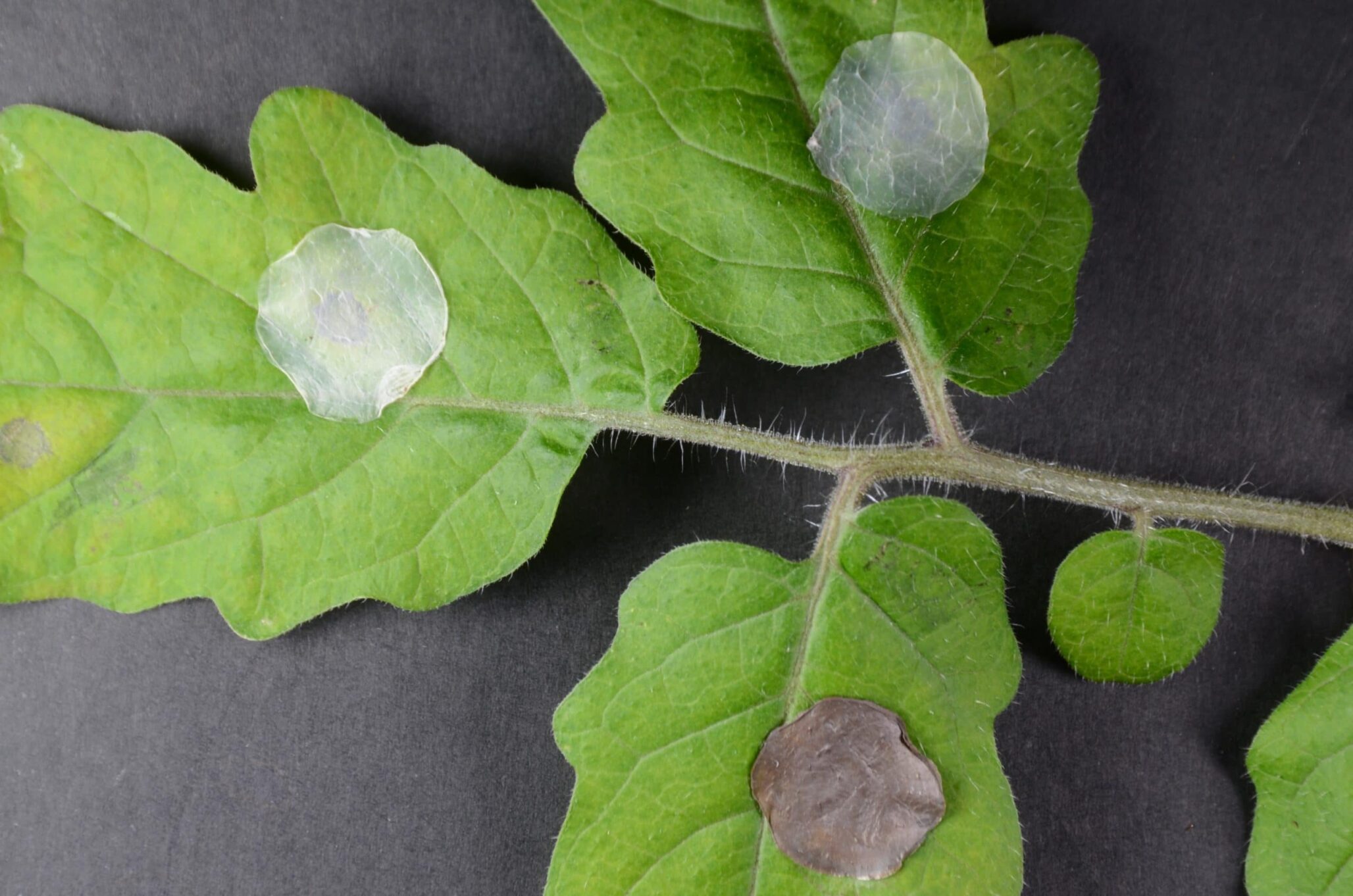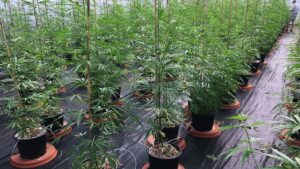Plants, like humans, can also get wounded. These wounds can be caused by several agents, such as bad weather, predators (herbivores, insects) or humans (pruning, grafting), among others, and are a breach of the outer protective layers (the skin) of plants, giving open access to many microbial pathogens that can cause severe diseases, resulting in dramatic crop losses for farmers.
Now, the teams lead by Dr. Anna Laromaine at the Institute of Materials Science of Barcelona (ICMAB-CSIC) and by Dr. Núria Sánchez Coll at the Centre for Research in Agricultural Genomics (CRAG) have developed a material to avoid contamination and heal these plant wounds. This solution is based on the use of an environmentally friendly nanocomposite patch made of bacterial cellulose and silver nanoparticles.
Bacterial cellulose is a very efficient wound healing material, currently being used in medicine thanks to its high biocompatibility. An advantage of this biopolymer is that its molecular structure is similar to plant cellulose, one of the plant’s main structural components. Moreover, due to its high-water holding capacity, bacterial cellulose has a hydrogel-like consistency, which increases its adherence to the plant leaves. The wound healing properties of bacterial cellulose have already been patented.
Currently, the efficacy and efficiency of the pesticides used to fight crop infections still face many challenges. Seeking to improve them, the ICMAB-CRAG team has anchored silver nanoparticles, which have antipathogenic properties, to the bacterial cellulose structure. The hybrid patch herein developed by Laromaine and Sánchez Coll, avoids runoff loss and rolling down of the nanoparticles, providing a slow and effective release of the pesticide effects from the bacterial cellulose. “Our hybrid patches should be safer for the environment than most current pesticides, which are based on liquid dispersions of silver compounds or nanoparticles”, explains Anna Laromaine, researcher from the ICMAB-CSIC. “Although the price of those materials is still not comparable to the currently used bulk products, they could find a niche in high value applications”, comments Núria Sanchez Coll, researcher from CRAG.
The research team demonstrated the positive antibacterial and antifungal properties of these hybrid patches in in vitro assays against Escherichia coli and two agro-economically relevant pathogens: the bacterium Pseudomonas syringae and the fungus Botrytis cinerea. In addition, in vivo infection inhibition was proved in two different plants (Nicotiana benthamiana and tomato plant leaves).
This article is the first research outcome of the collaborative project between Dr. Anna Laromaine, from the Nanoparticles and Nanocomposites Group at the ICMAB-CSIC, and Dr. Núria Sánchez Coll, from the Group of Bacterial Pathogens and Plant Cell death at the CRAG. “It is a fun adventure, to work in such an interdisciplinary team! Solving problems and approaching them from different perspective is the way to go” affirms Anna Laromaine, from ICMAB-CSIC.
The ICMAB and the CRAG held a joint meeting on July 2018 to find synergies between both Severo Ochoa Centers of Excellence. Maybe more fruitful collaborations will arise from it!
“Plant Healing” is a Llavor Grant awarded by Els Fons Europeus de Desenvolupament Regional (FEDER) and the Departament d’Empresa i Coneixement de la Generalitat de Catalunya (PLANT HEALING 2016 LLAVOR 00052) and works to offer a novel material that could be implemented in current grafting protocols with no extra time or effort to significantly improve graft efficiency. PLANT HEALING will make an agricultural breakthrough, by developing a new nanocomposite material containing silver nanoparticles linked to bacterial nanocellulose. The study is also financed by the Severo Ochoa Center of Excellence project at the ICMAB and CRAG, and by the Spanish Ministry of Science, Innovation and Universities.
Source: Centre For Research In Agricultural Genomics













